New Acquisitions in Special Collections, 2024-2025
Collections
On Display through August 25, Neilson Library 3rd floor
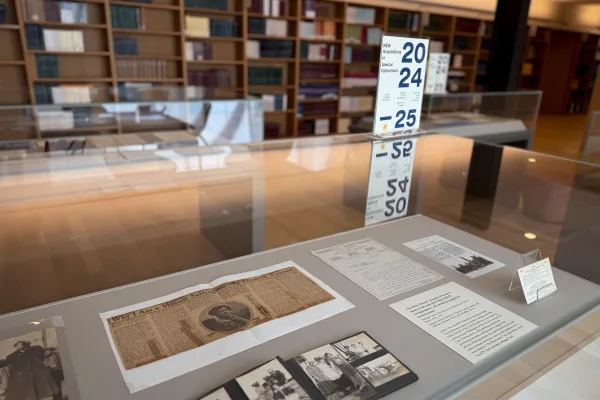
Published July 17, 2025
A broad scope of recent Smith College Special Collections acquisitions are now on display in Neilson Library. The acquisitions span all three repositories in Special Collections and range from abortion rights political cartoons, to handwritten letters from Smith students to their parents, to posters and photographs around union organizing efforts at the college.
Keep reading to learn more about these unique collections:
A Selection of Recent Acquisitions
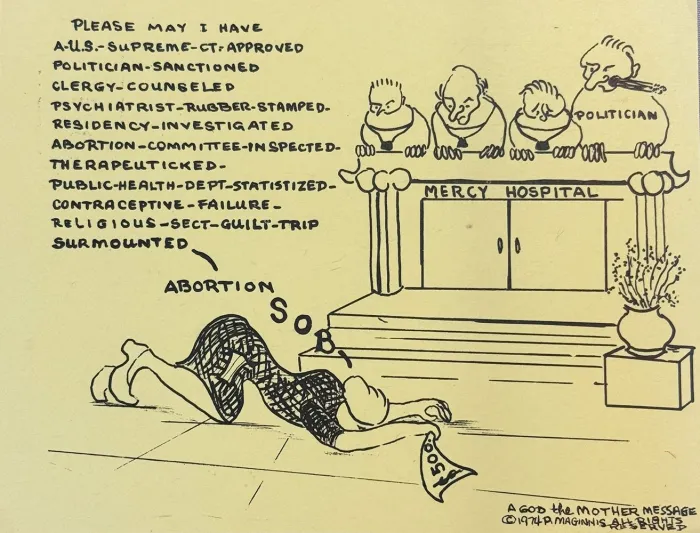
Political cartoons about abortion
Patricia Therese Maginnis, 1968-1977
Sophia Smith Collection topical files, Sophia Smith Collection of Women's History
Patricia Therese Maginnis (1928-2021) was one of the earliest abortion rights advocates in the United States. In 1969, she co-founded the Association to Repeal Abortion Laws (ARAL), which later became NARAL Pro-Choice America. Maginnis was influential in shifting the abortion debate from regulations governing medical providers to the right of women to control their own bodies. She distributed literature that informed women where they could obtain safe abortions abroad and even led "do-it-yourself" abortion classes.
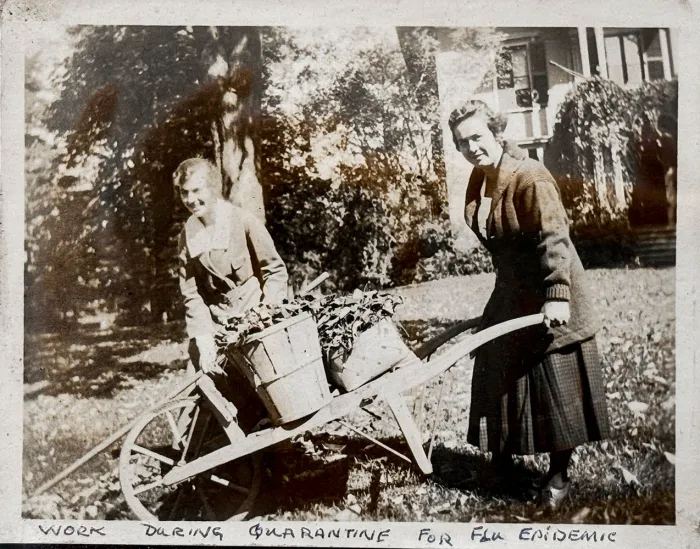
Photographs of students performing outdoor chores during the Influenza outbreak of 1918
Vera Prentice, class of 1920
Classes of 1911-1920 records
Between October 2-17,1918, the College suspended all lectures and meetings because of illness from the influenza. Students who did not voluntarily relocate to their homes were quarantined on campus. The College houses were isolated. Students could not travel to downtown Northampton. Baldwin House was taken over as a convalescence site. When the Cooley-Dickinson Hospital was full and ½ the staff was ill, volunteer students acted as emergency nurses under the direction of Helen Wright, the Director of the Appointment Bureau (aka:Career Services). Faculty were also active in nursing ill students and community members.
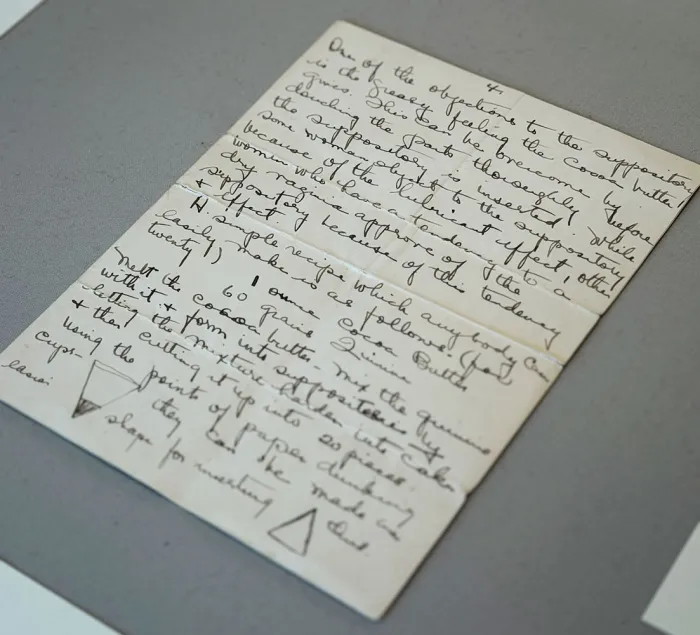
Handwritten description of birth control methods
Unknown, [circa 1920s]
Sophia Smith Collection topical files, Sophia Smith Collection of Women's History
This is the fourth page of a five-page guide to methods for preventing unwanted pregnancy, dating from the 1920s. Here the author lays out the "simple recipe" for quinine and cocoa butter contraceptive suppositories, along with diagrams instructing the reader how to shape each suppository for easier insertion.
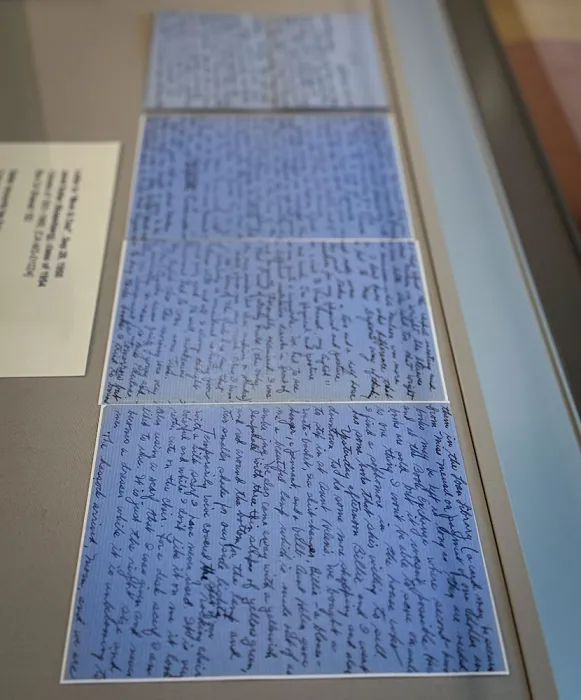
Letter to "Mom & Dad", Sep 28, 1950
Janet Salter (Rosenberg), class of 1954
Classes of 1951-1960
Salter recounts her first early days of being a Smith College student. She discusses her first Freshman Class Meeting, her posture photo experience, her first English class, and morning chapel.
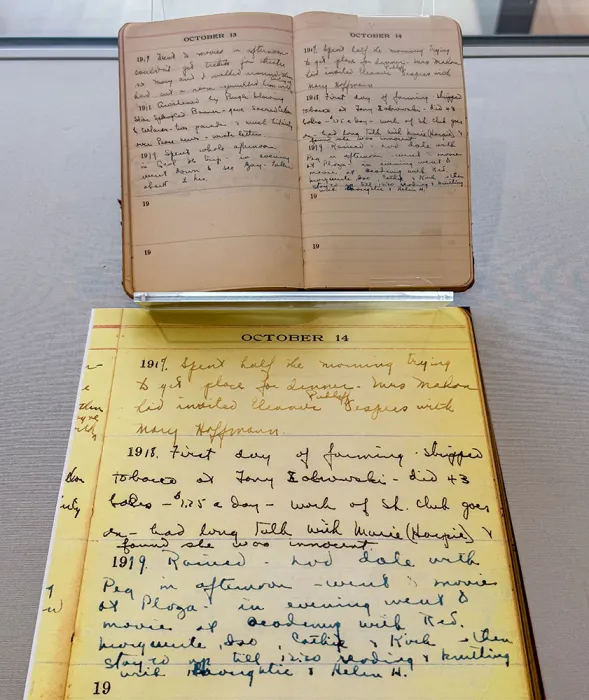
LINE-A-DAY Journal Entry, OCT 14, 1918
Vera Prentice, class of 1920,
Classes of 1911-1920 records
Those students who stayed behind on campus during the 2 week quarantine period were encouraged to be outside as much as possible. Students were quarantined by house, and could only meet with other house residents. Some Smith students took the opportunity to work at local farms, which needed a workforce that had been depleted by men serving in the U.S. military during WW1.
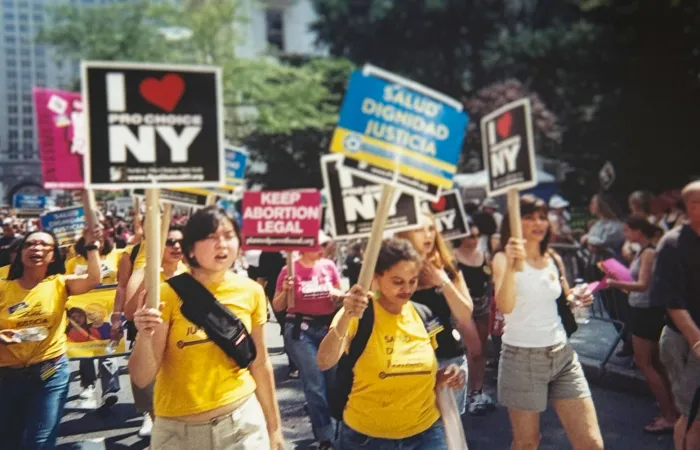
National Latina Institute for Reproductive Justice poster and photographs
NLIRJ, 2004 & undated
National Latina Institute for Reproductive Justice records, Sophia Smith Collection of Women's History
Founded in 1989 as part of the non-profit Catholics for a Free Choice, the National Latina Institute for Reproductive Justice (NLIRJ) became an independent organization in 1994. It centers and amplifies Latine voices in pursuit of health, dignity, and justice for their communities. The photographs show members of the NLIRJ taking part in a 2004 march across the Brooklyn Bridge in support of abortion rights, part of a protest of the Republican National Convention. With an estimated 25,000 marchers, it was reported to be the largest abortion rights demonstration in New York City in 30 years.
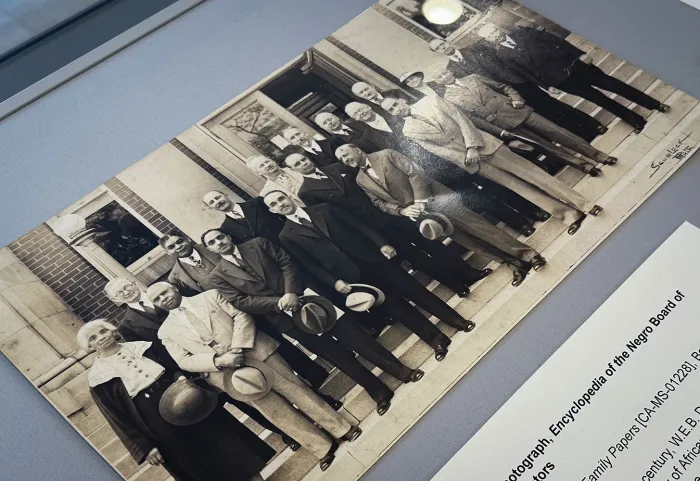
Encyclopedia of the Negro Board of Directors Photograph
Cromwell Family Papers
For nearly a half-century, W.E.B. DuBois wanted to edit a multi-volume history of Africans in the diaspora. The Encyclopedia was to be a comprehensive compendium of the history, science, culture of all people of African descent. Unfortunately, he was unable to raise funds for such an elaborate project. In 1946, a first volume of the Encyclopedia was published with funding from the Phelps Stokes Fund. Otelia Cromwell, class of 1900 was one of the many individuals who wrote entries for this volume.
Left to right: Miss Otelia Cromwell, Monroe N. Work, Charles H. Wesley, Benjamin Brawley, W. E. B. Du Bois, Eugene Kinckle Jones, Alain Locke, Waldo G. Leland. Center: James Weldon Johnson, Charles T. Loram. Rear: W.D. Weatherford, A.A. Schomburg, Joel E. Spingarn, Clarence S. Marsh, Anson Phelps Stokes, W.A. Avery, James H. Dillard, Miss Florence Read, Mordecai W. Johnson. The photo date is disputed; according to Shirley Graham Du Bois, the photo was taken in Washington, D.C., on May 16, 1936.
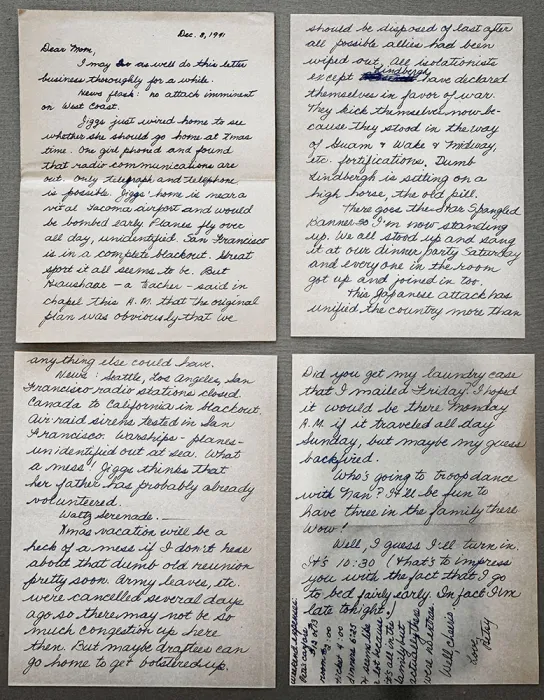
Letter to mother, Dec 8, 1941
Elizabeth I. Parker (Soukup), class of 1945
Classes of 1941-1950 records
Betsy Parker writes home to her mother about how the College reacts to the bombing of Pearl Harbor, Hawaii on December 7, 1941.
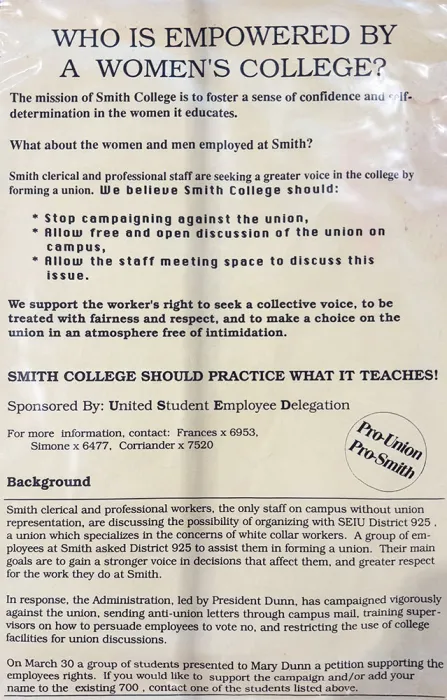
Poster, "Who Is Empowered by a Women's College?", 1993
Service Employees International Union, Local 211 records
The United Student Employee Delegation supported the potential unionization of Smith's clerical and professional workers in 1993. The WE WIN (Worker's Empowering Workers in Northampton) unionization campaign was unsuccessful.
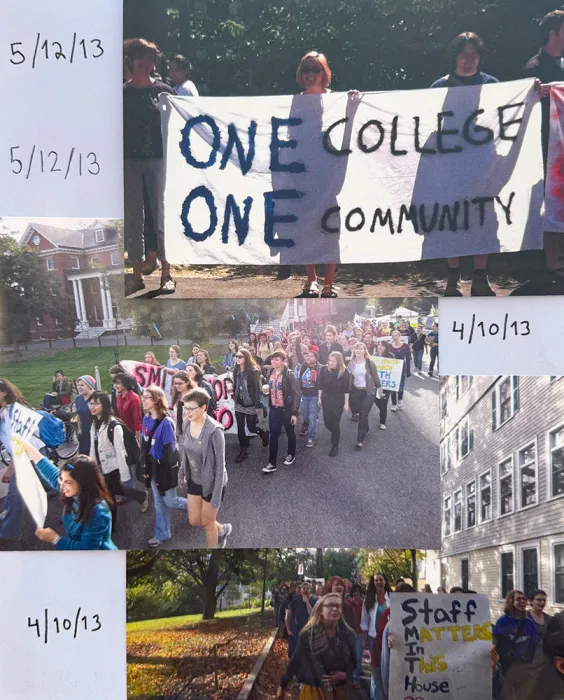
Photographs, United Student Employee Delegation protests, 2013-2016
Service Employees International Union, Local 211 records
Established in 1991, the student group USED (United Student Employee Delegation) was a form of student solidarity with unionized workers on campus.
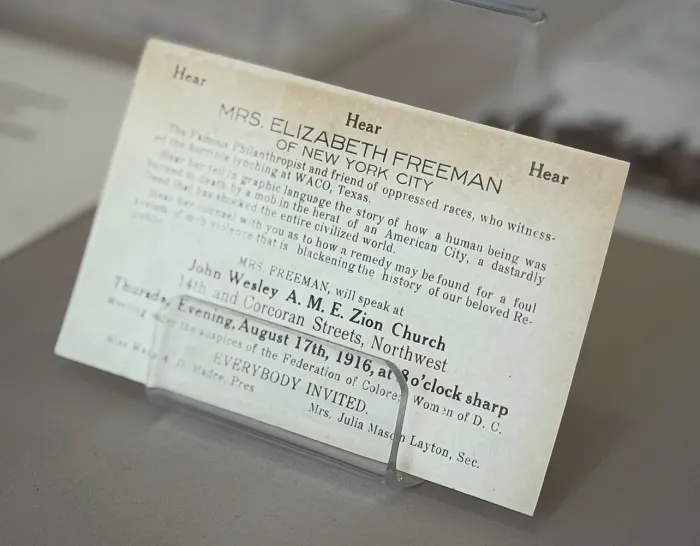
“The Waco Horror”: Elisabeth Freeman's report in The Crisis (July 1916), NAACP correspondence, and speaking engagement announcement
Elisabeth Freeman, Roy Nash, and the Federation of Colored Women of D.C., 1916
Margaret Johnston collection on Elisabeth Freeman, Sophia Smith Collection of Women's History
In May 1916, Elisabeth Freeman was traveling through Texas speaking in support of women's suffrage when Roy Nash, Secretary of the NAACP, asked her to investigate the lynching of Jesse Washington in Waco for their journal, The Crisis. Freeman spent a week gathering evidence and interviewing witnesses, putting herself in danger in the process. Following her July 1916 article describing the brutal crime, Freeman undertook a cross-country speaking tour to bear witness to "The Waco Horror" and raise money for the NAACP's Anti-Lynching Campaign Fund.
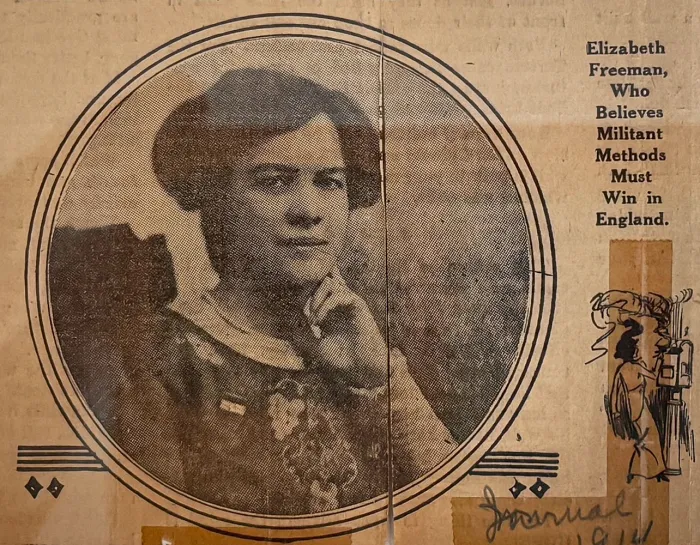
Elisabeth Freeman suffrage photographs & newspaper article
Elisabeth Freeman, 1913-1916
Margaret Johnston collection on Elisabeth Freeman, Sophia Smith Collection of Women's History
Elisabeth Freeman (1876-1942) was a white, British-born suffragist, pacifist, and civil rights activist. She spent 1905-1911 in England, honing her skills as a "militant suffragette" with the Women's Social and Political Union, led by noted English suffrage activist Emmeline Pankhurst.
Upon her return to the U.S. in 1911, Freeman became a prominent speaker and organizer in the American suffrage movement. The 1913 photograph features Freeman on a soapbox delivering pro-suffrage remarks, while the 1916 album depicts her aboard the SS San Jacinto with friends, traveling home at the conclusion of her suffrage and anti-lynching work in Texas.